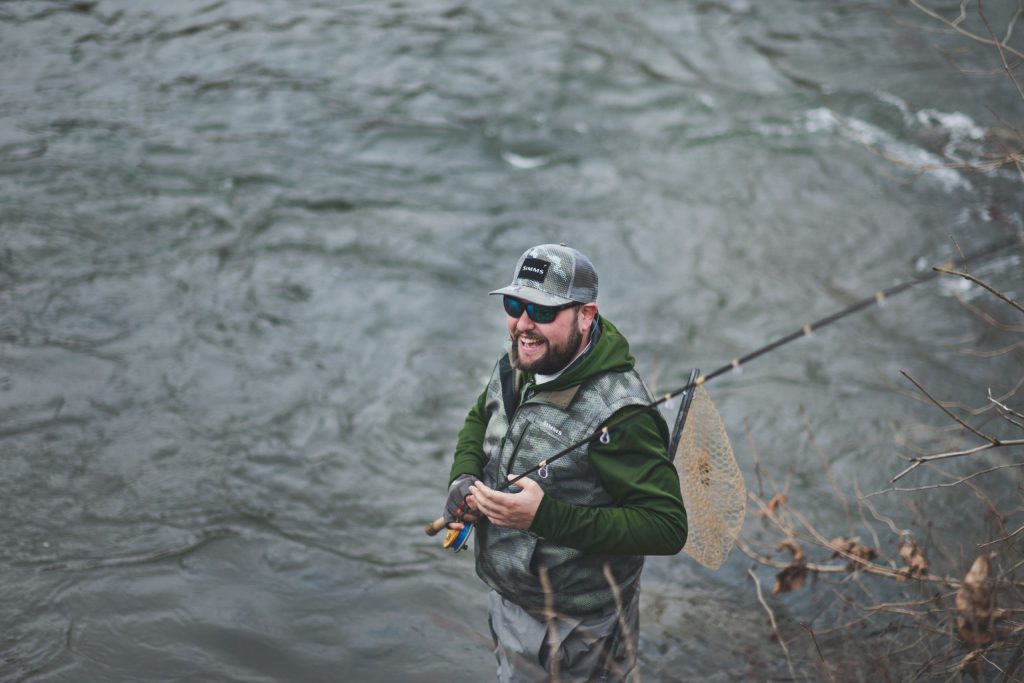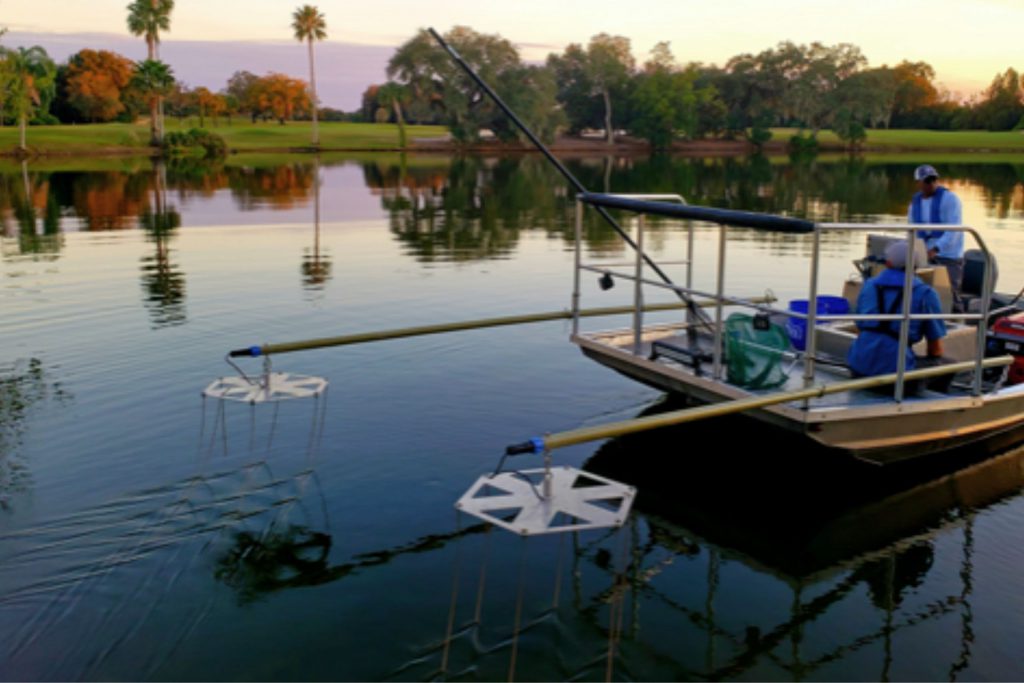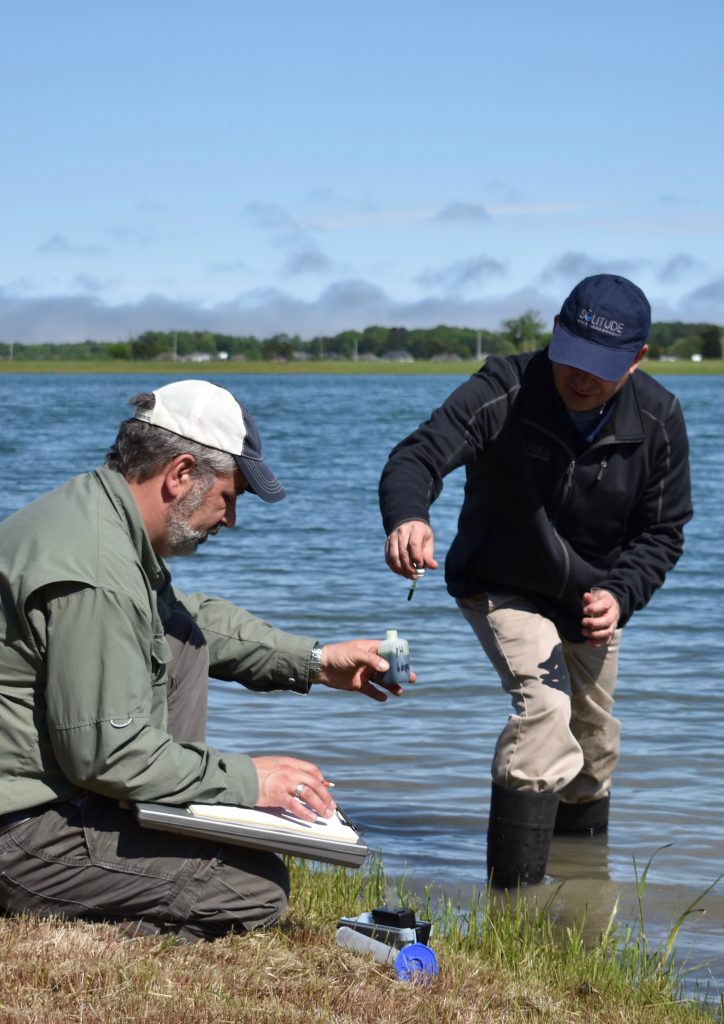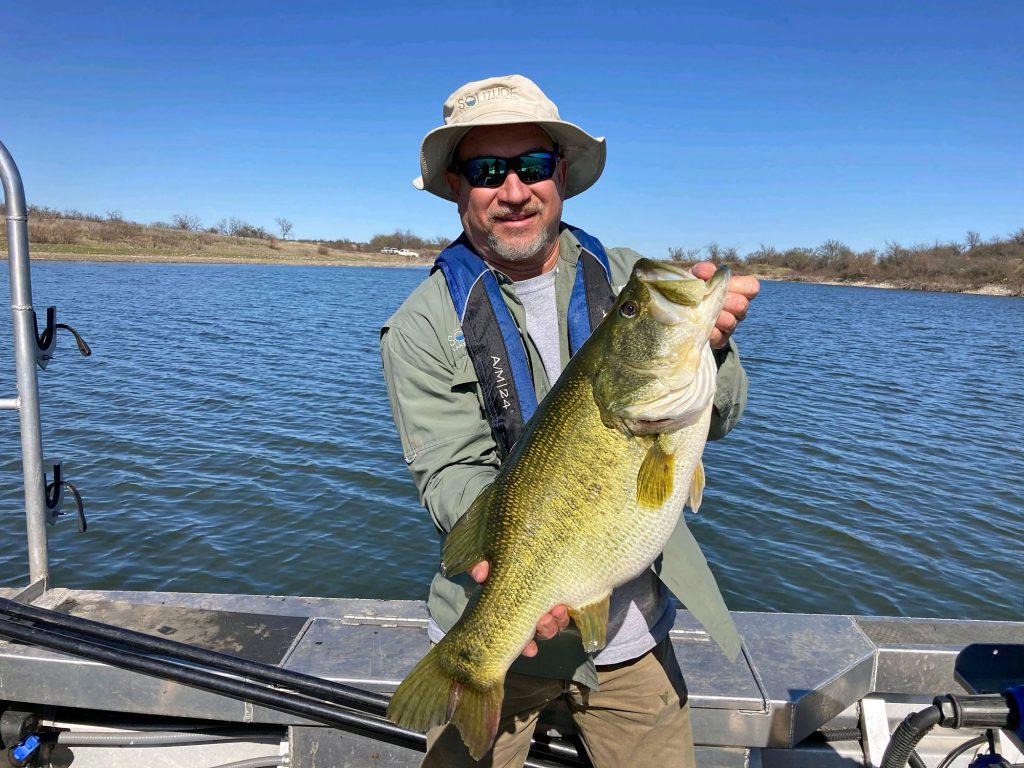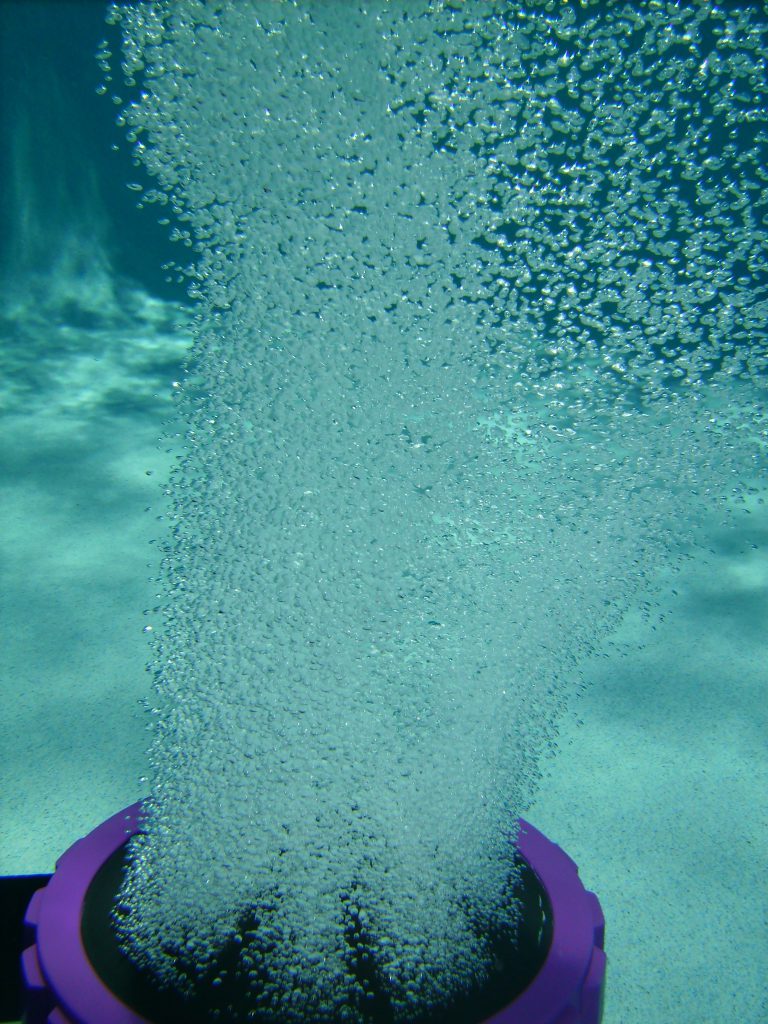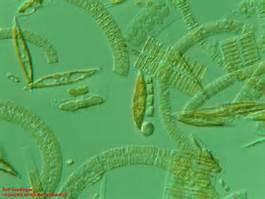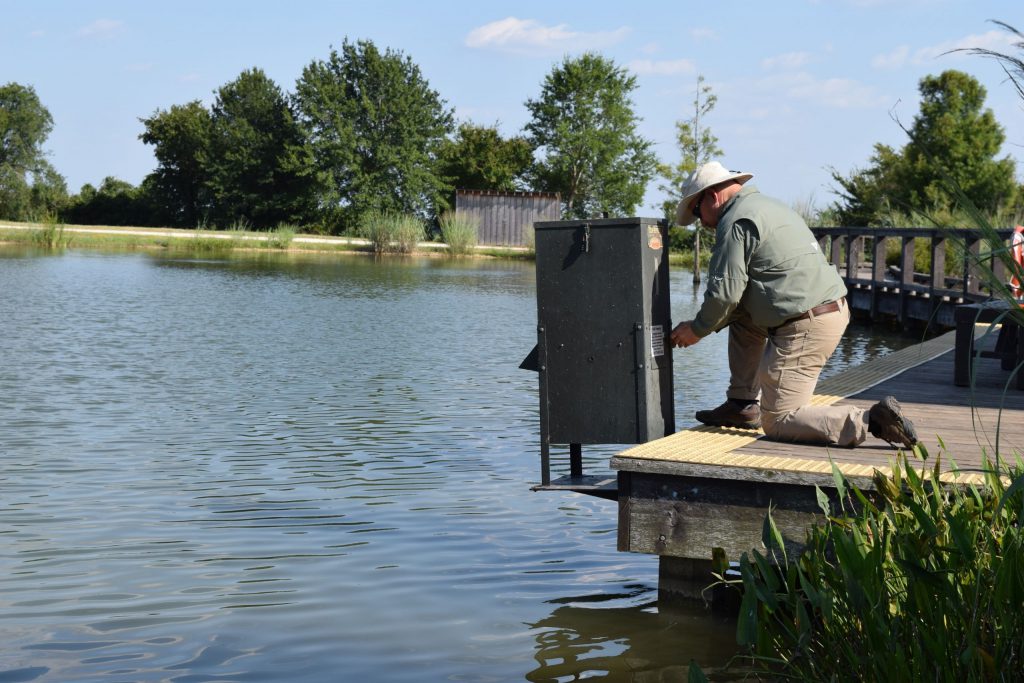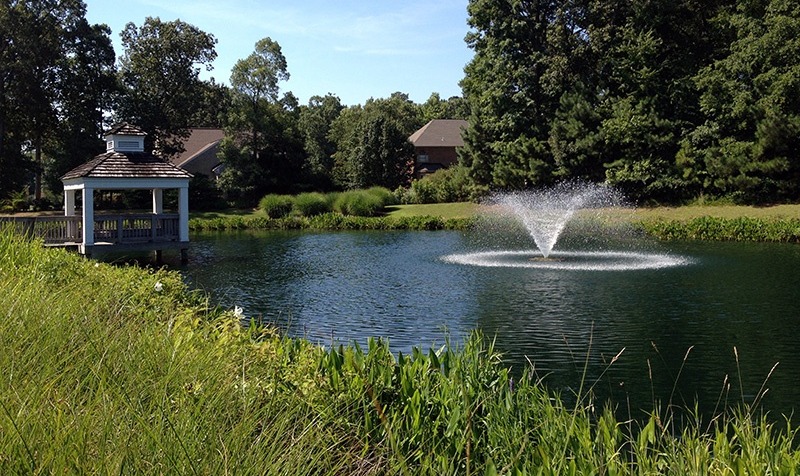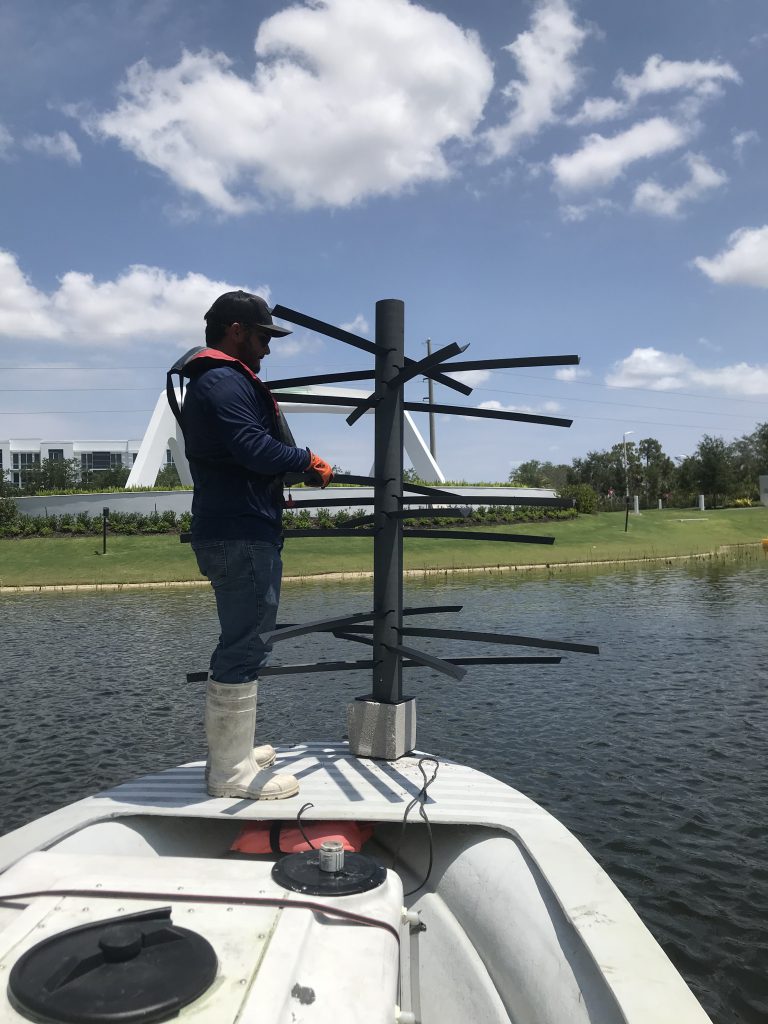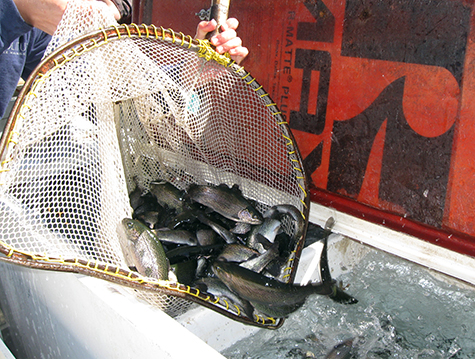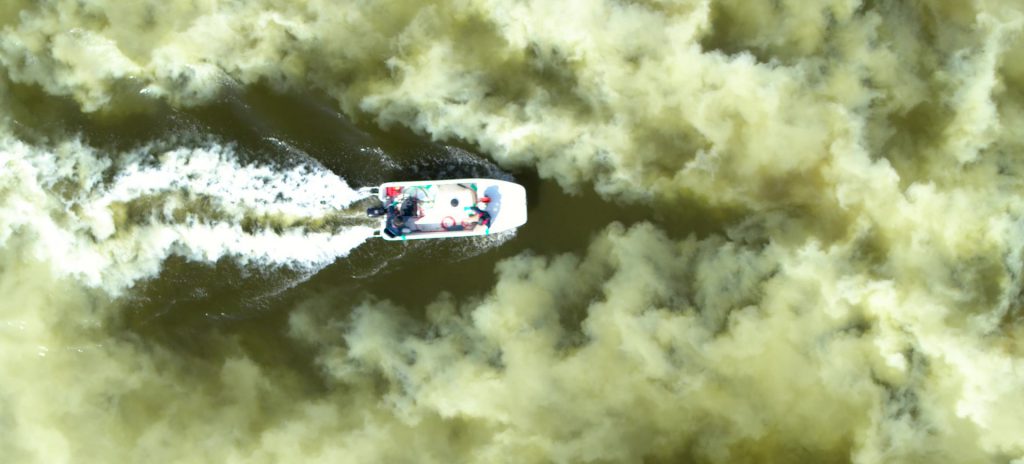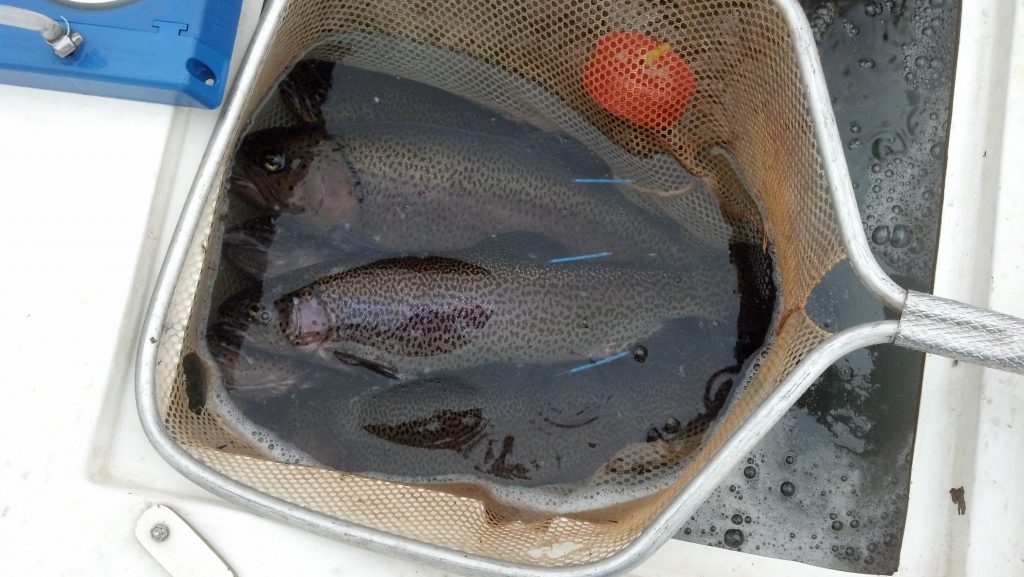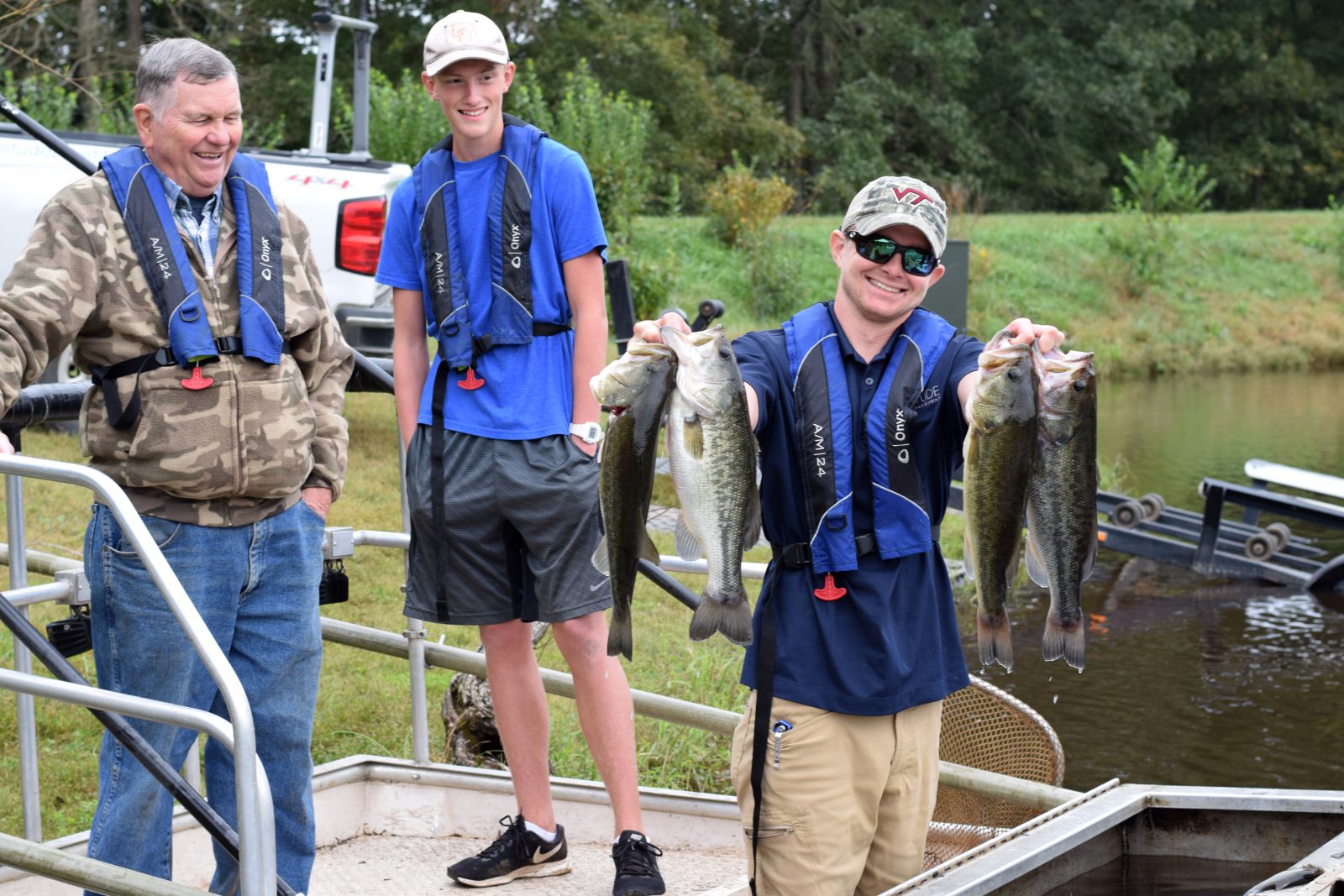
12 Strategies to Create a Thriving, Balanced Fishery:
Establishing a successful fishery doesn’t happen overnight. Consider these twelve strategies to develop a healthy, productive fishery:
1. Determine Your Goals
Goals will directly influence the management methods chosen to enhance a fishery. Are you striving to grow trophy Largemouth Bass or establish a fun fishing spot for the kids? Answer these questions before implementing a Fisheries Management Plan (FMP).
2. Conduct an Electrofishing Survey
Electrofishing is a sampling tool used to gather fish population data. Lake and pond owners who desire to know more about the species in their waterbody and implement professional management strategies should ensure an electrofishing study is conducted to inform initial decision making.
3. Test Water Quality
Poor water quality significantly stresses fish. Even with plenty of available food, fish will not grow or develop properly in imbalanced water conditions. To support fish habitat productivity, water quality tests should be conducted on a regular basis.
4. Develop a Fisheries Management Plan
A professional Fisheries Management Plan (FMP) serves as the foundation for any fisheries program and should be designed based on a waterbody’s current status, the goals, and the budget of the stakeholder.
5. Introduce Aeration
Lake and pond aeration improves circulation of the water column and increases dissolved oxygen levels, therefore preventing stratification. As a result, aerated waterbodies support higher levels of fish productivity and reduce the risk of fish kills.
6. Manage Plankton Species and Densities
Maintaining desirable plankton species is a great way to increase the amount of fish that a pond can support. Waterbodies with properly maintained plankton blooms, which serve as the foundation of the food chain, can sustain three to four times the typical biomass of fish.
7. Implement a Feeding Program
Automatic fish feeders are an ideal method to feed many species of fish, including both forage fish and predator fish. The additional food source supports a greater biomass of fish while also creating an active fishing spot for kids.
8. Plant Beneficial Emergent Vegetation
Installation of non-invasive beneficial emergent plant species around the perimeter of a lake or pond provides food and habitat for a wide variety of fish and organisms.
9. Add Fish Cover
Natural and artificial fish cover provide needed refuge to small fish and create more dynamic hunting habitats for predator fish. One of the biggest benefits is increased angler catch rates.
10. Stock Supplemental Forage Fish
Stocking supplemental forage fish keeps a fisheries forage base strong and abundant. The species and quantity of fish is dependent on the goals and current needs of the fishery, as well as local stocking regulations.
11. Perform Liming
Liming increases the water’s alkalinity levels, directly affecting the availability of nutrients to aquatic organisms, therefore, improving productivity. Low alkalinity levels reduce productivity and cause broad swings in pH levels, which is stressful to fish.
12. Stock Rainbow Trout
Stocking Rainbow Trout is an easy way to create diversity for anglers and add excitement to winter fishing. Rainbow Trout can be stocked in regions where water temperature drops into the 60s or lower for a couple of months per year.
Develop Your Custom Fisheries Management Plan Today
It’s important to note that time of year, geographic location, and the current state of a fishery will determine when or whether these strategies should be implemented. Speak with a Fisheries Biologist to start developing your Fisheries Management Plan.
Who We Are
At SOLitude Lake Management we’re dedicated to making water a more healthy and beautiful part of our environment and our world. In that pursuit we offer sustainable, comprehensive lake and pond management solutions.
SOLitude Lake Management is a nationwide environmental firm committed to providing sustainable solutions that improve water quality, enhance beauty, preserve natural resources and reduce our environmental footprint. SOLitude’s team of aquatic resource management professionals specializes in the development and execution of customized lake, pond, wetland, and fisheries management programs that include water quality testing and restoration, nutrient remediation, algae, and aquatic weed control, installation and maintenance of fountains and aeration systems, bathymetry, shoreline erosion restoration, mechanical harvesting and hydro-raking, lake vegetation studies, biological assessments, habitat evaluations, and invasive species management. Services and educational resources are available to clients nationwide, including homeowners associations, multi-family and apartment communities, golf courses, commercial developments, ranches, private landowners, reservoirs, recreational and public lakes, municipalities, drinking water authorities, parks, and state and federal agencies. SOLitude Lake Management is a proud member of the Rentokil Steritech family of companies in North America.








